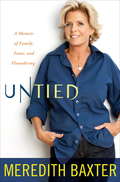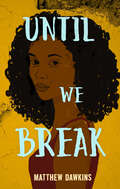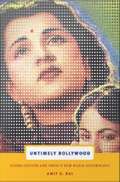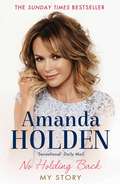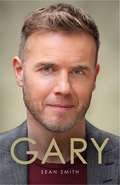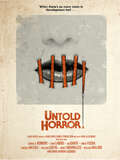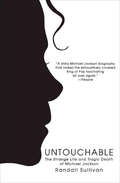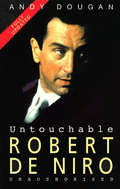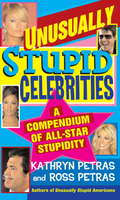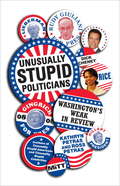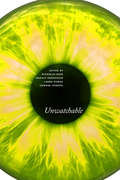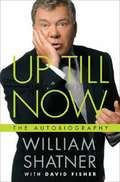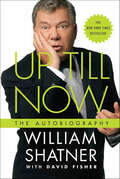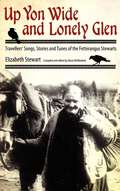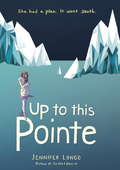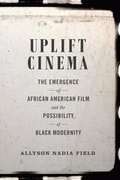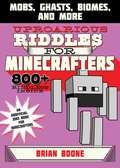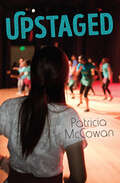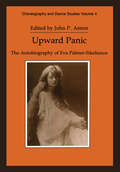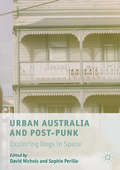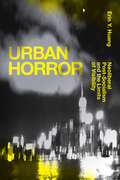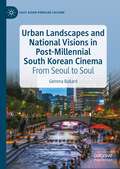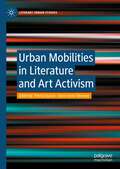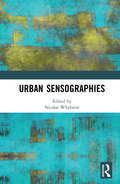- Table View
- List View
Untied: A Memoir of Family, Fame, and Floundering
by Meredith BaxterI remember Sarah asking me, when I'd just begun therapy with her, what I looked for in a man. After a few moments of silent, tense deliberation I had it. Hair, I blurted. He has to have hair. Meredith Baxter is a beloved and iconic television actress. Her warmth, humor, and brilliant smile made her one of the most popular women on television, with millions of viewers following her on the small screen each week. Yet her success masked a tumultuous personal story and a harrowing private life. For the first time, Baxter is ready to share her incredible highs, (working with Robert Redford, Doris Day, Lana Turner, and the cast of Family Ties), and lows (a thorny relationship with her mother, a difficult marriage to David Birney, a bout with breast cancer), finally revealing the woman behind the image. From her childhood in Hollywood, growing up the daughter of actress and co-creator of One Day at a Time Whitney Blake, Baxter became familiar with the ups and downs of show business from an early age. After wholeheartedly embracing the 60s counterculture lifestyle, she was forced to rely on her acting skills after her first divorce left her a 22-year-old single mother of two. Baxter began her professional career with supporting roles in the critically panned horror film Ben, and in the political thriller All the President's Men. More lucrative work soon followed on the small screen. Baxter starred with actor David Birney as the title characters in controversial sitcom Bridget Loves Bernie. While the series only lasted a year, her high-profile romance with Birney lasted 15 volatile and unhappy years. Hiding the worst of her situation from even those closest to her, Baxter's career flourished as her self-esteem and family crumbled. Her successful run as Nancy on Family was followed by her enormously popular role as hippie mom, Elyse Keaton, on Family Ties, and dozens of well-received television movies. After a bitter divorce and custody battle with Birney, Baxter increasingly relied on alcohol as a refuge, and here speaks candidly of her decision to take her last drink in 1990. And while another ruinous divorce to screenwriter Michael Blodgett taxed Baxter's strength and confidence, she has emerged from her experiences with the renewed self-assurance, poise, and understanding that have enabled her to find a loving, respectful relationship with Nancy Locke, and to speak about it openly. Told with insight, wit, and disarming frankness,Untied is the eye-opening and inspiring life of an actress, a woman, and a mother who has come into her own.
Until We Break
by Matthew DawkinsDance like everyone's watching. Because they are.As the only Black student at her ballet academy, Naomi Morgan knows her feelings of isolation and artistic sacrifice are the price she has to pay in order to win the Youth American Grand Prix, the country’s most prestigious dance competition. Winning means access to a spot in a top ballet school and, ultimately, a place with The New York City Ballet. Nothing else matters.But when Naomi’s dance instructor assigns her Odette’s variation from Swan Lake, Naomi’s world begins to fall apart. She doesn’t think she can dance the part—and her doubts become the loudest voice in her head. Her best friend, Jessica, used to be her sounding board, her support, her co-star—and even though Jessica died in a freak car accident, Naomi still sees and hears her everywhere.She’s been burying her grief by focusing on her dancing. But when an injury steals that refuge, Naomi’s mental health deteriorates and she starts to seek answers outside of her carefully constructed reality. Then one night, she meets Saint, a street artist, and he opens up an entirely new world for her. A world that’s not connected to dance.Saint spends his nights creating brilliant and beautiful messages of social change that the world needs to hear. In their sleepy California town, he wants to mix it up—to force the world to see him as he is—he’s got a voice and isn’t afraid to use it. Even if his family life is tough. Even if the same avenues that are open to Naomi are not open to him.Together they both learn that there’s no one right way to be in the world. For Naomi, this means that maybe dance isn’t the only choice for her. Maybe her voice can be louder off stage, and she can shine in a different kind of spotlight. Maybe she and Saint will shine together and everything will be different in the best possible way.
Untimely Bollywood: Globalization and India's New Media Assemblage
by Amit S. RaiKnown for its elaborate spectacle of music, dance, costumes, and fantastical story lines, Bollywood cinema is a genre that foregrounds narrative rupture, indeterminacy, and bodily sensation. In Untimely Bollywood, Amit S. Rai argues that the fast-paced, multivalent qualities of contemporary Bollywood cinema are emblematic of the changing conditions of media consumption in a globalizing India. Through analyses of contemporary media practices, Rai shifts the emphasis from a representational and linear understanding of the effects of audiovisual media to the multiple, contradictory, and evolving aspects of media events. He uses the Deleuzian concept of assemblage as a model for understanding the complex clustering of technological, historical, and physical processes that give rise to contemporary media practices. Exploring the ramifications of globalized media, he sheds light on how cinema and other popular media organize bodies, populations, and spaces in order to manage the risky excesses of power and sensation and to reinforce a liberalized postcolonial economy. Rai recounts his experience of attending the first showing of a Bollywood film in a single-screen theater in Bhopal: the sensory experience of the exhibition space, the sound system, the visual style of the film, the crush of the crowd. From that event, he elicits an understanding of cinema as a historically contingent experience of pleasure, a place where the boundaries of identity and social spaces are dissolved and redrawn. He considers media as a form of contagion, endlessly mutating and spreading, connecting human bodies, organizational structures, and energies, thus creating an inextricable bond between affect and capital. Expanding on the notion of media contagion, Rai traces the emerging correlation between the postcolonial media assemblage and capitalist practices, such as viral marketing and the development of multiplexes and malls in India.
Untitled
by Amanda HoldenActress, presenter, talent show judge. Daughter, wife, mother, survivor. There's so much more to Amanda Holden than fame. A natural-born performer, Amanda's journey to becoming one of the most recognisable faces on our screens today has been one full of love, laughter and tears. A British star and nationally treasured actress, she has appeared on our screens and stages for over 20 years. In the notoriously tricky world of show business, Amanda has carved out her own identity and enjoyed impressive longevity, not least as the longest running judge on hit ITV show Britain's Got Talent. She never fails to keep her audience engaged and entertained. Charming, funny and incredibly honest, her story is remarkable. For the first time, No Holding Back tells it in her own words, in her own way, and shows her fans the real woman behind the headlines.
Untitled book 2
by Sean SmithTop celebrity biographer Sean Smith tells the story of national treasure Gary Barlow, one of the UK's greatest songwriters and musicians. Throughout a stellar career, nobody has been more misunderstood than Gary Barlow. When he first found fame, he was perceived as too arrogant. Then, after a spectacular slump and amazing recovery, he adopted a modesty that underrates his lifetime achievements. In this book Sean Smith redresses the balance by revealing the real man, the romances that shaped his life and the passion for music that drives him. A singer and virtuoso keyboard player who performed in working men's clubs from the age of thirteen, the young Gary Barlow had written more than a hundred songs while still at school. He would go on to achieve phenomenal success as the musical force behind Take That, the most popular boy band of all time. But an eagerly anticipated solo career flopped and Gary became depressed and overweight, while the triumphs of Robbie Williams were a constant reminder of his failure. In 2006 Take That returned bigger than ever and their huge success was followed by an emotional reunion between Gary and Robbie, that was cemented when they put aside past hurts to write and perform new songs together. Now recognized as one of the greatest songwriters and musicians the UK has ever produced, Gary is among the best-known faces on television, returning as head judge on the X Factor in 2013. Featuring original interviews with many people who have never spoken before, Gary is a celebration of a complex and unique talent.
Untold Horror
by Joe Dante John Landis George. A Romero Dave Alexander Brian YuznaInsightful interviews of horror legends George Romero, John Landis, Joe Dante, Brian Yuzna, and more, by former editor-in-chief of Rue Morgue, Dave Alexander, about the scariest horror movies never made!Take a behind-the-scenes look into development hell to find the most frightening horror movies that never were, from unmade Re-Animator sequels to alternate takes on legendary franchises like Frankenstein and Dracula!Features art, scripts, and other production material from unmade films that still might make you scream--with insights from dozens of directors, screenwriters, and producers with decades of experience. Featured Interviews With: George A. RomeroJohn LandisJoe DanteVincenzo NataliBrian YuznaWilliam LustigWilliam MaloneBuddy GiovinazzoTim SullivanRichard RaaphorstRuggero DeodatoJim ShooterBob LaytonDavid J. Skal
Untouchable: The Strange Life and Tragic Death of Michael Jackson (Books That Changed the World)
by Randall SullivanThe investigative biography of Michael Jackson&’s final years: &“A tale of family, fame, lost childhood, and startling accusations never heard before&” (ABC Nightline). When Michael Jackson died on June 25, 2009, millions of fans around the world were shocked. But the outpouring of emotion that followed his loss was bittersweet. Dogged by scandal for years and undone by financial mismanagement, Jackson had become untouchable in many quarters. Untouchable pulls back the curtain Jackson&’s public person to introduce a man who, despite his immense fame, spent his entire life utterly alone; who, in the wake of a criminal trial that left him briefly hospitalized, abandoned Neverland to wander the globe before making one final—and fatal—attempt to recover his wealth and reputation. The Jackson that emerges in these pages is both naïve and cunning, a devoted father whose parenting became an international scandal, a shrewd businessman whose failures nearly brought down a megacorporation, and an inveterate narcissist who craved a quiet, normal life. Randall Sullivan delivers never-before-reported information about Jackson&’s business dealings, his relationship with his family, and the pedophilia allegations that derailed his life and mar his legacy today, as well as the suspicious nature of his death. Based on exclusive access to Jackson&’s inner circle, Untouchable is an intimate, unflinching portrait of the man who continues to reign as the King of Pop. &“A dishy Michael Jackson biography that makes the exhaustively covered King of Pop fascinating all over again.&” —People
Untouchable: Unauthorised
by Andy DouganAndy Dougan draws on first-hand interviews with some of De Niro's closest friends and colleagues. The result is a revealing and sometimes startling account of an intensely private man. While previous biographies of De Niro have only scraped the surface of his complex character, this sensitive and perceptive portrayal lays bare the psychological and emotional scars that De Niro has sought to hide for so long.
Unusually Stupid Celebrities: A Compendium of All-Star Stupidity
by Ross Petras Kathryn PetrasThe Greeks honored Zeus, the Romans revered Juno, but modern civilization worships a different sort of god: Celebrity. Face it, we follow the stars' every move, fashion choice, and deliciously dishy affairs. Now Kathryn Petras and Ross Petras, authors of Unusually Stupid Americans, pull the demanding divas, screwball stars, and celebu-twits off their pedestals-and prove it doesn't take a degree in rocket science to become famous. Cases in point: * Courtney Love misses an important court date relating to "possession of a controlled substance" because she can't find a professional bodyguard at the last minute. * Mariah Carey's entourage includes a skirt-from-touching-floor specialist, a towel hand-off person, and a professional drink holder/lifter. * Savvy traveler Paris Hilton concludes that all of Europe is, "like, French. " * Mensa candidate and rocker Tommy Lee is pretty sure that Winston Churchill was president during the Civil War, that the numeric equivalent of pi is "the two-equals-MC-squared thing," and that an isosceles triangle is "somewhere in Bermuda." Feuds, faith, family, money, sex, tantrums, travel-no star-studded stone is left unturned. Filled with jaw-dropping anecdotes, quirky quotes, and special stupid-celebrity awards, Unusually Stupid Celebrities provides a red-faced glimpse of the red carpet.
Unusually Stupid Politicians: Washington's Weak in Review
by Ross Petras Kathryn PetrasKathryn Petras and Ross Petras, bestselling authors of the scathingly funny Unusually Stupid Americans and Unusually Stupid Celebrities, now set their bipartisan sights on the hallowed halls of the United States government. Unusually Stupid Politicians exposes the mind-boggling but true political mishaps, missteps, and miscues that have even the savviest spin doctors shaking their heads and saying "No comment." Sections include * Extreme Hairsplitting--such as when Florida governor Jeb Bush, after being accused of hiding in a closet from rampaging Democrats, denied the allegation completely, stating that "it was actually a boiler room" * Brilliant and Innovative Ideas from The Pentagon-- like their groundbreaking "Gay Bomb," their "Bad Breath Inducing" halitosis weapon and their plans to enlist The Three Stooges in the fight against terror. * Creative Political Excuses--such as "I just discovered I'm Jewish and it's a Holy Day,"--used by Senator George Allen, who, after learning of his Jewish heritage, got out of a Senate hearing to "observe" Yom Kippur * The Most Egregiously Large Political Egos--measured in standard Chuck Schumer Ego Units (CSEUs). This hilarious and eye-opening exposé gives awards for "How I Blew My Campaign" and "Worst Campaign Ad," and shares a list of candidates "endorsed by God," as well as a list of those who lost because of Satan. So turn off C-SPAN and quit text-messaging congressional pages--you're about to learn what the definition of "is" is.
Unwatchable
by J. Hoberman Jonathan Rosenbaum Boris Groys Susie Bright Vivian Sobchack W.J.T. Mitchell Noel Carroll Bill Nichols Jonathan Crary Stefano Harney Jan Olsson Barbara Hammer B. Ruby Rich Fred Moten Mattias Frey Abigail De Kosnik E. Ann Kaplan Jeffrey Sconce Meghan Sutherland Michael Boyce Gillespie Christophe Wall-Romana Jennifer Malkowski Asbjørn Grønstad Jack Halberstam Jared Sexton Rebecca Schneider Frances Guerin Peter Geimer Alexandra Juhasz Julian Hanich Samuel England Mauro Resmini Katariina Kyrölä Erika Balsom Kenneth Berger Alex Bush Alec Butler Mel Chen Lynne Joyrich Nathan Lee Akira Lippit Brandy Monk-Payton Danielle Peers Raul Perez Elif Rongen-Kaynakçi Philipp Stiasny Bennet Togler Leshu Torchin Alok Vaid-Menon Meir Wigoder Emily Wills Federico Windhausen Stanley Wolukau-Wanambwa Genevieve Yue Alenka Zupancic Poulomi SahaWe all have images that we find unwatchable, whether for ethical, political, or sensory and affective reasons. From news coverage of terror attacks to viral videos of police brutality, and from graphic horror films to transgressive artworks, many of the images in our media culture might strike us as unsuitable for viewing. Yet what does it mean to proclaim something “unwatchable”: disturbing, revolting, poor, tedious, or literally inaccessible? With over 50 original essays by leading scholars, artists, critics, and curators, this is the first book to trace the “unwatchable” across our contemporary media environment, in which viewers encounter difficult content on various screens and platforms. Appealing to a broad academic and general readership, the volume offers multidisciplinary approaches to the vast array of troubling images that circulate in global visual culture.
Up Till Now: The Autobiography
by William Shatner David FisherThe autobiography of the famous TV, movie and theater star, who has played roles such as Captain James T. Kirk, Denny Crane, the Priceline negotiator, T. J. Hooker, and more.
Up Till Now: The Autobiography
by William Shatner David FisherAfter almost sixty years as an actor, William Shatner has become one of the most beloved entertainers in the world. And it seems as if Shatner is everywhere. In Up Till Now, Shatner sits down with readers and offers the remarkable, full story of his life and explains how he got to be, well, everywhere. It was the original Star Trek series, and later its films, that made Shatner instantly recognizable, called by name---or at least by Captain Kirk's name---across the globe. But Shatner neither began nor has ended his career with that role. From the very start, he took his skills as an actor and put them to use wherever he could. He straddled the classic world of the theater and the new world of television, whether stepping in for Christopher Plummer in Shakespeare's Henry V or staring at "something on the wing" in a classic episode of The Twilight Zone. And since then, he's gone on to star in numerous successful shows, such as T.J. Hooker,Rescue 911, and Boston Legal. William Shatner has always been willing to take risks for his art. What other actor would star in history's first---and probably only---all-Esperanto-language film? Who else would share the screen with thousands of tarantulas, release an album called Has Been, or film a racially incendiary film in the Deep South during the height of the civil rights era? And who else would willingly paramotor into a field of waiting fans armed with paintball guns, all waiting for a chance to stun Captain...er, Shatner?In this touching and very funny autobiography, William Shatner's Up Till Now reveals the man behind these unforgettable moments, and how he's become the worldwide star and experienced actor he is today."It is now Bill Shatner's universe---we just live in it."---New York Daily News
Up Yon Wide and Lonely Glen: Travellers' Songs, Stories and Tunes of the Fetterangus Stewarts
by Elizabeth StewartElizabeth Stewart is a highly acclaimed singer, pianist, and accordionist whose reputation has spread widely not only as an outstanding musician but as the principal inheritor and advocate of her family and their music. First discovered by folklorists in the 1950s, the Stewarts of Fetterangus, including Elizabeth's mother Jean, her uncle Ned, and her aunt Lucy, have had immense musical influence. Lucy in particular became a celebrated ballad singer and in 1961 Smithsonian Folkways released a collection of her classic ballad recordings that brought the family's music and name to an international audience. Up Yon Wide and Lonely Glen is a significant memoir of Scottish Traveller life, containing stories, music, and songs from this prominent Traveller family. The book is the result of a close partnership between Elizabeth Stewart and Scottish folk singer and writer Alison McMorland. It details the ancestral history of Elizabeth Stewart's family, the story of her mother, the story of her aunt, and her own life story, framing and contextualizing the music and song examples and showing how totally integrated these art forms are with daily life. It is a remarkable portrait of a Traveller family from the perspective of its matrilineal line. The narrative, spanning five generations and written in Scots, captures the rhythms and idioms of Elizabeth Stewart's speaking voice and is extraordinary from a musical, cultural, sociological, and historical point of view. The book features 145 songs, eight original piano compositions, folktale versions, rhymes and riddles, and eighty fascinating illustrations, from the family of Elizabeth, her mother Jean (1912–1962) and her aunt Lucy (1901–1982). In addition, there are notes on the songs and a series of appendices. Up Yon Wide and Lonely Glen will appeal to those interested in traditional music, folklore, and folk song—and in particular, Scottish tradition.
Up to This Pointe
by Jennifer LongoA refreshingly original contemporary YA, unlike anything readers have seen before. Perfect for fans of Jandy Nelson, John Corey Whaley, and Libba Bray. She had a plan. It went south. Harper is a dancer. She and her best friend, Kate, have one goal: becoming professional ballerinas. And Harper won't let anything--or anyone--get in the way of The Plan, not even the boy she and Kate are both drawn to. Harper is a Scott. She's related to Robert Falcon Scott, the explorer who died racing Amundsen and Shackleton to the South Pole. So when Harper's life takes an unexpected turn, she finagles (read: lies) her way to the icy dark of McMurdo Station . . . in Antarctica. Extreme, but somehow fitting--apparently she has always been in the dark, dancing on ice this whole time. And no one warned her. Not her family, not her best friend, not even the boy who has somehow found a way into her heart. It will take a visit from Shackleton's ghost--the explorer who didn't make it to the South Pole, but who got all of his men out alive--to teach Harper that success isn't always what's important, sometimes it's more important to learn how to fail successfully. "One of the most breathtaking explorations of navigating heartbreak that I've ever read. This is one for the ages." --Martha Brockenbrough, author of The Game of Love and Death "A moving love letter to dance, dreams, and San Francisco." --Kirkus Reviews Praise for Jennifer Longo's Six Feet Over It: A VOYA Perfect Tens 2014 Pick An Indies Introduce New Voices Pick "Like nothing you've read before." --Bustle.com "Equal parts poignant and humorous. . . . Superb." --Kirkus Reviews, Starred "A vibrant voice. . . . Readers will rejoice." --The Bulletin, Starred "A unique book for unique teens." --Booklist "Darkly funny and deeply moving. An original, memorable voice." --Jennifer L. Holm, New York Times bestselling author "A wildly funny coming-of-age story about life, love, death, and everything in between." --Sarah McCarry, author of All Our Pretty Songs "Terrific. Longo had me at 'graveyard' and then dug me in deeper with wit, dark humor, and splendid characters." --Lisa Brown, New York Times bestselling author "A strong heroine, multicultural cast, and eclectic contemporary setting make Longo's story stand out." --Publishers Weekly "Stands out for its unusual setting and also the sarcasm and caustic humor of its protagonist." --The Horn Book Review "Hilarious, clever, and poignant." --SLJFrom the Hardcover edition.
Uplift Cinema: The Emergence of African American Film and the Possibility of Black Modernity
by Allyson Nadia FieldIn Uplift Cinema, Allyson Nadia Field recovers the significant yet forgotten legacy of African American filmmaking in the 1910s. Like the racial uplift project, this cinema emphasized economic self-sufficiency, education, and respectability as the keys to African American progress. Field discusses films made at the Tuskegee and Hampton Institutes to promote education, as well as the controversial The New Era, which was an antiracist response to D. W. Griffith's The Birth of a Nation. She also shows how Black filmmakers in New York and Chicago engaged with uplift through the promotion of Black modernity. Uplift cinema developed not just as a response to onscreen racism, but constituted an original engagement with the new medium that has had a deep and lasting significance for African American cinema. Although none of these films survived, Field's examination of archival film ephemera presents a method for studying lost films that opens up new frontiers for exploring early film culture.
Uproarious Riddles for Minecrafters: Mobs, Ghasts, Biomes, and More (Jokes for Minecrafters)
by Brian Boone Amanda BrackUproarious Riddles for Minecrafters is the fifth book in the Jokes for Minecrafters series, which is complete with more than eight hundred riddles! "Dig in" to these funny brainteasers about Minecraft mobs, tools, and biomes that will really make you think! You'll have such a BLAST reading all of these crafty riddles and jokes. All of your favorite parts of the Minecraft game are included in the book, and the riddles will have you continuing the Minecraft fun! <p><p> For kids ages five and up, this is the perfect book for at home, at school, or really anywhere! You’ll enjoy telling these silly jokes to your friends and family. As a bonus there are silly illustrations throughout for extra laughs!
Upstaged (Orca Limelights)
by Patricia McCowanEllie is used to getting leading roles in her small-town school’s musicals, but her place at center stage disappears when her dad becomes the host of a breakfast TV show and they have to move to the big city. When Ellie auditions for—and lands—a spot with the Youth Works Theater Company, she comes up against a tight-knit group of talented, experienced and competitive triple-threat performers. Not only does she not get a lead, but she has to share a role with Marissa, a company veteran who seems determined to do all she can to outshine Ellie. Out of her depth and far from all that she’s known, Ellie wonders just what she has to do to stop feeling upstaged by everyone around her. This short novel is a high-interest, low-reading level book for middle-grade readers who are building reading skills, want a quick read or say they don’t like to read! The epub edition of this title is fully accessible.
Upward Panic: The Autobiography of Eva Palmer-Sikelianos (Choreography and Dance Studies Series #Vol. 4.)
by John P. AntonFirst Published in 1993.A complete autobiography of Evalina Palmer-Sikelianos (1874-1952), a woman of immense spiritual strength who fought for the arts against the background of war. She contributed impressively throughout her life to the revival of interest in classical Greece, the theatre and choral dance, and advocated an adherence to mythical authenticity rather than a romanticised view of Greek tragic drama.
Urban Australia and Post-Punk: Exploring Dogs in Space
by David Nichols Sophie PerilloRichard Lowenstein’s 1986 masterpiece Dogs in Space was and remains controversial, divisive, compelling and inspirational. Made less than a decade after the events it is based on, using many of the people involved in those events as actors, the film explored Melbourne’s ‘postpunk’ counterculture of share houses, drugs and decadence. Amongst its ensemble cast was Michael Hutchence, one of the biggest music stars of the period, in his acting debut. This book is a collection of essays exploring the place, period and legacy of Dogs in Space, by people who were there or who have been affected by this remarkable film. The writers are musicians, actors and artists and also academics in heritage, history, urban planning, gender studies, geography, performance and music. This is an invaluable resource for anyone passionate about Australian film, society, culture, history, heritage, music and art.
Urban Crime Control in Cinema: Fallen Guardians and the Ideology of Repression (Palgrave Studies in Crime, Media and Culture)
by Vladimir RizovThis book uses popular films to understand the convergence of crime control and the ideology of repression in contemporary capitalism. It focuses on the cinematic figure of the fallen guardian, a protagonist who, in the course of a narrative, falls from grace and becomes an enemy of the established social order. The fallen guardian is a figure that allows for the analysis of a particular crime control measure through the perspective of both an enforcer and a target. The very notion of ‘justice’ is challenged, and questions are posed in relation to the role that films assume in the reproduction of policing as it is. In doing so, the book combines a historical far-reaching perspective with popular culture analysis. At the core remains the value of the cinematic figure of the fallen guardian for contemporary understandings of urban space and urban crime control and how films are clear examples of the ways in which the ideology of repression is reproduced.This book questions the justifications that are often given for social control in cities and understands cinema as a medium for offering critique of such processes and justifications. Explored are the crime control measures of private policing in relation to RoboCop (1987), preventative policing and Minority Report (2002), mass incarceration in The Dark Knight Rises (2012), and extra-judicial killing in Blade Runner 2049 (2017). The book speaks to those interested in crime control in critical criminology, cultural criminology, urban studies, and beyond.
Urban Horror: Neoliberal Post-Socialism and the Limits of Visibility (Sinotheory)
by Erin Y. HuangIn Urban Horror Erin Y. Huang theorizes the economic, cultural, and political conditions of neoliberal post-socialist China. Drawing on Marxist phenomenology, geography, and aesthetics from Engels and Merleau-Ponty to Lefebvre and Rancière, Huang traces the emergence and mediation of what she calls urban horror—a sociopolitical public affect that exceeds comprehension and provides the grounds for possible future revolutionary dissent. She shows how documentaries, blockbuster feature films, and video art from China, Hong Kong, and Taiwan made between the 1990s and the present rehearse and communicate urban horror. In these films urban horror circulates through myriad urban spaces characterized by the creation of speculative crises, shifting temporalities, and dystopic environments inhospitable to the human body. The cinematic image and the aesthetics of urban horror in neoliberal post-socialist China lay the groundwork for the future to such an extent, Huang contends, that the seeds of dissent at the heart of urban horror make it possible to imagine new forms of resistance.
Urban Landscapes and National Visions in Post-Millennial South Korean Cinema: From Seoul to Soul (East Asian Popular Culture)
by Gemma BallardThis book explores South Korean cinema’s inimitable relationship with the urban landscape and identifies the ways in which Seoul is utilised as a celluloid canvas, national artefact and, above all else, a distinctive cultural backdrop. Using five different approaches to urban space, from five distinctive and contrasting theoretical perspectives, Urban Landscapes in Post-Millennial South Korean Cinema investigates and seeks to understand why the cinematic representation, identity and presence of Seoul have been central to the preservation and recognition of the South Korean film industry as an independent, autonomous and nationally unique institution.
Urban Mobilities in Literature and Art Activism (Literary Urban Studies)
by Patricia García Anna-Leena ToivanenUrban Mobilities in Literature and Art Activism explores the entwinement of mobility and immobility in urban spaces by focusing on their representation in literary narratives but also in visual and performing arts. Across a range of geographical contexts, this volume builds on the new mobilities paradigm developed by literary scholars, sociologists and human geographers. The different chapters employ a cohesive framework that is sensitive to the intersecting dimensions of power and discrimination that shape urban kinetic features. The contributions are divided into three sections, each of which places the focus on a different aspect of urban mobility: Itinerant Subjects, Modes of Transport and Places of Transit, and Urban Liminalities.Chapter 7, "Alienation, Abjection and the Mobile Postcolonial City: Public Transport in Ousmane Sembène’s “Niiwam” and Yvonne Vera’s Without a Name" is available open access under a Creative Commons Attribution 4.0 International License via link.springer.com.
Urban Sensographies
by Nicolas WhybrowUrban Sensographies views the human body as a highly nuanced sensor to explore how various performance-based methods can be implemented to gather usable ‘felt data’ about the environment of the city as the basis for creating embodied mappings. The contributors to this fascinating volume seek to draw conclusions about the constitution, character and morphology of urban space as public, habitable and sustainable by monitoring the reactions of the human body as a form of urban sensor. This co-authored book is centrally concerned, as a symptom of the degree to which cities are evolving in the 21st century, to examine the effects of this change on the practices and behaviours of urban dwellers. This takes into account such factors as: defensible, retail and consumer space; legacies of modernist design in the built environment; the effects of surveillance technologies, motorised traffic and smart phone use; the integration of ‘wild’ as well as ‘domesticated’ nature in urban planning and living; and the effects of urban pollution on the earth’s climate. Drawing on three years of funded practical research carried out by a multi-medial team of researchers and artists, this book analyses the presence and movement of the human body in urban space, which is essential reading for academics and practitioners in the fields of dance, film, visual art, sound technology, digital media and performance studies.
